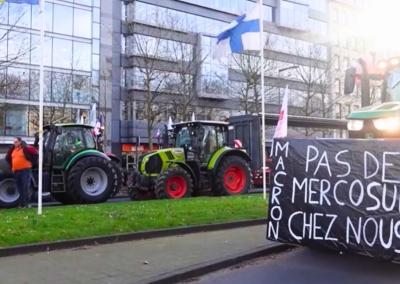A plot with difficult uneven terrain - how to landscape and garden it
There are some garden and landscape design ideas that will look strange on a flat plot. Or expensive. So, in some cases, a plot with a difficult uneven terrain is a pure success. The unevenness can be local – for example, potholes or hills. How can you intelligently manage a rough site and create a garden or a special landscape?
Let's see how different variations of complex terrain can be used in landscape design.
A completely flat, level plot with a hole in the centre
If the sudden change in terrain is a large natural pothole, it is usually simply filled in. But you can reinvent the pothole in a landscaping project – an artificial pond or recreation area will fit organically into the pothole.
In this way, the local roughness of the terrain can be used to create a water body. The edges of the hollow can be beautifully decorated with cobbled slopes.
An interesting solution could be to create a semi-subterranean basement – build the walls, the roof and fill the rest of the pit with earth. A layer of ground cover can be created on the roof of the cellar and a flower bed or lawn can be planted on top of it, making the cellar invisible from the outside. The most important thing is to calculate the structure of the building correctly so that it can withstand the weight of the earth.
Pitholes are often flooded by groundwater and collect rainwater. Therefore, when using natural pits in a project, do not forget to install pumps with filters and to drain the water from the pitches into the storm sewer system. When constructing basements, be sure to consider drainage.
Hill plot
A more common occurrence on a plot is a convex unevenness - a hill. Hills are formed after construction, after digging a hole for a house foundation. But such seemingly unnecessary „piles“ can also be used for landscaping or gardening.
For example, creating a rock garden or a rockarium. Or break up a large hill into several small ones, improve them with a fertile soil mix and sow a lawn on top. You could build a retaining wall around the hill and, if you cut away one of the slopes, build a stone bench, a fireplace or a mangal, and enjoy the fire in the evenings, out of sight.
It's worth checking out the work of Japanese garden craftsmen. The delicacy and precision with which they work any irregularities in the terrain, the way they expertly fit all the functional areas into the existing hollows and cubes, not by flattening them, but by accentuating them.Gently sloping terrainThere may be a variety of variations. For example, the site is flat on a plane, but the whole plane has a slope. In such cases, the site is usually terraced: buildings on one flat terrace and a garden on the other. In addition, terraces can be several and can take a variety of complex shapes. The location of the difference in elevation is shaped in two ways: rigidly, with retaining walls, or softly, with slopes.
Supporting walls are often used in our gardens. But slopes are not very common. And that's no wonder. If you have several terraces on your plot, the abundance of retaining walls can seem too unnatural. But slopes are not so noticeable and are cheaper to implement. Slopes can be sown in the wind (if the slope is steep, it is better to sow the lawn in a special lawn net). Trees and shrubs can be used to create an interesting composition of varying heights. An artificial stream or a whole cascade can be created. The flowing water will then be very organic – much better than a stream on a completely flat level plot.
Drainage (e.g. a trench filled with rubble or a drainage pipe with a device to channel water from the top to the bottom of the slope) is needed at the base and at the edge of the large slope.
When clay soils do not allow the water from spring flooding to soak in and strip fence foundations are made without a drainage pipe, the water simply has nowhere to go in the lowland areas, the soil becomes acidic and becomes covered with moss. The only correct solution for such areas is the installation of drainage and water drainage, as well as the appropriate siting of permanent residential buildings. The drainage line itself can be designed as a stream – as the water itself has chosen this location, this can be used for landscape design.











































































































